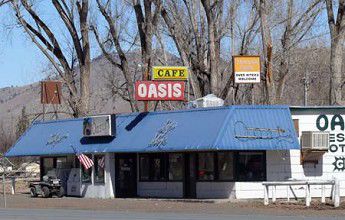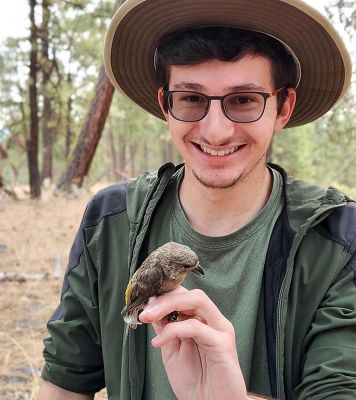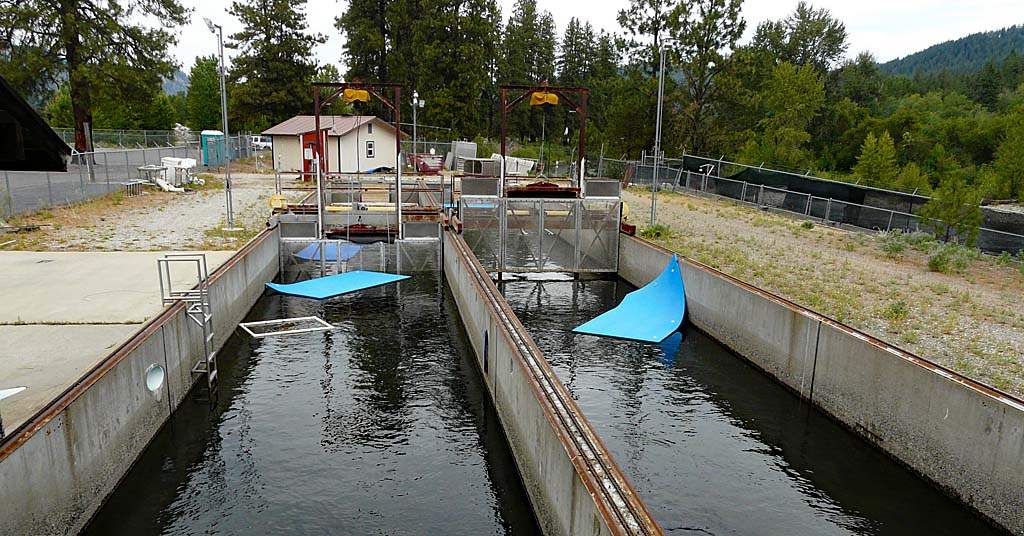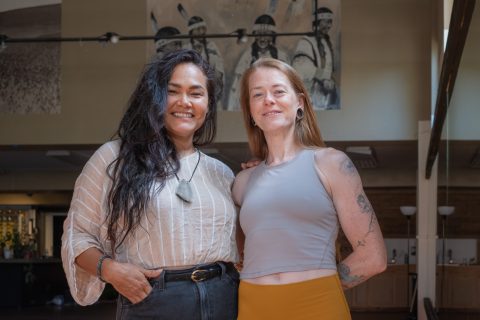The Oasis lives between Vale and Burns
Published 9:29 am Saturday, July 25, 2009

- Tom White, who has spent 62 years living in Juntura, now works as supervisor for a Rural Road Assessment District for Malheur County.<BR><I>Photo by George Murdock for The East Oregonian
Juntura is a place where people mostly pass through on their way from Ontario to Burns or vice versa. In some ways, it almost looks like a tree-covered oasis in an area where anything tall enough to provide shade is an anomaly.
And most of those who go through town seem to be driving freight trucks. To many of them, Juntura is about the only place they have to brake along a 120-mile stretch of Highway 26.
Trending
Some of them do more than brake, however, because they’ve figured out it’s worth stopping at the Oasis – Juntura’s only business and a fixture along the roadside, which also offers motel units and RV sites. In fact, truckers are an important part of the business plan at the Oasis, along with the locals who come in and visit during breakfast and then try to leave for a bit before they come back and visit during lunch. Tammy Lyon has owned the place for a decade and she’s trying to sell it, although by her own admission, “not very aggressively. I would insist that whoever buy it be nice people who will take food to some of the elderly people in town and not charge them,” she says.
Lyon has three grown children, all of whom attended Juntura School through the 8th grade and then went to high school at Harper, which is about 40 miles west toward Vale. “I like having a gathering place,” says Lyon.
“This area is great for fishing and hunting, there’s elk, deer and antelope. We get hunters in here during the season.” Tom White has spent almost his entire 62 years in Juntura, coming to town when he was two, and now supervises the Juntura area of the Rural Road Assessment District for Malheur County. He is in charge of keeping up 170 miles of road.
White and his wife, a retired school teacher at Juntura, live on a corner of the ranch his dad still operates. His dad, 98-year old J. B. White, wasn’t available for an interview because he had just taken a load of cows “up the hill to pasture.”
The younger White sent four kids through Juntura School. “Lots of the kids go on to Crane for high school,” says White,” because they can board there. Others go to Ontario, Harper, Vale, or Burns.” Two of White’s children went to Harper so they could commute each day. “They were involved in activities,” says White, “and it was pretty tough living more than 40 miles from the school.”
Now all four kids are scattered around the Pacific Northwest with college degrees and careers of their own. White says the sources of employment in Juntura are ranching, the state highway crew, the restaurant, and the post office.
Trending
The population is somewhere in the mid-double digits, although the answers varied from 30 to 60. Lyon says she thinks about 100 people live in the general vicinity of Juntura. Although the town has just one business, there are two churches, the Community Christian Church and a small Catholic Church. Seventeen miles south of Juntura, via a winding gravel road, is a neighborhood called Riverside. There is still a railroad bed, which is highly visible, and a sign denoting Riverside. Apparently there were stockyards there in the early days, although now the settlement is a single ranch that was owned some years ago by Wayne Blaylock and is now owned by Sam McDaniel. The giant ranch covers tens of thousands of acres on either side of the Malheur River, which flows through the area.
John Haskins, a firefighter from John Day and part-time ranch employee, says Blaylock was once the postmaster in Riverside but the post office has long since been closed. The tiny office still sits in Blaylock’s front yard.
Blaylock is in his mid-eighties and still lives on the ranch he once owned. Almost a world of its own, McDaniel’s ranch is symbolic of the isolated, giant holdings scattered through western and southern Malheur County, which like Harney County is one of the largest in America. Juntura was founded in 1913 but it was visited almost a century earlier by Peter Skene Ogden, who was leading a party of Hudson’s Bay trappers that camped overnight just outside of what is now the tiny community on October 10, 1828. It was Ogden’s fifth and final expedition into the Snake Country. He had left Fort Nez Perce at Walla Walla and traveled as far as Salt Lake before returning to Walla Walla in July of 1829. During their trek, the party took 2,000 beavers. The countryside around Juntura probably doesn’t look a lot different than it did when Ogden visited, with the exception of a few improvements here and there. While it has a beauty of its own, it’s an endless and rugged panorama of stark hills, valleys and outcroppings mixed with an occasional scattering of junipers. And that’s just the way the natives like it.









